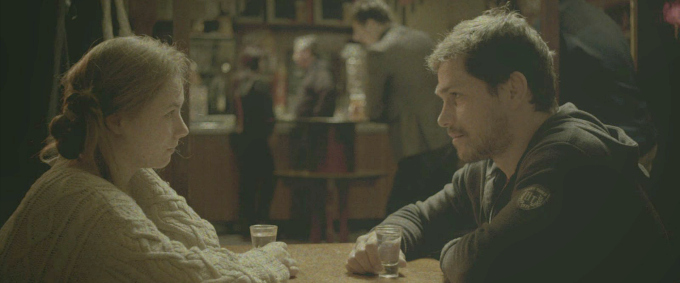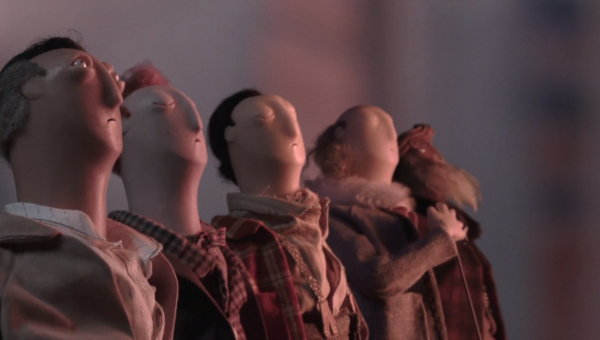 Three highly accomplished films – EDMOND, PLAYFELLOWS and MANOMAN – were shown in the Watersprite Festival’s ‘Emotions’ strand. This seemed rather arbitrarily named: given the copulating dogs, explicit sex talk and full-frontal puppet nudity depicted in the films, a more apt heading might have been ‘NSFW’. More significantly, the juxtaposition of two similarly themed British animations either side of a naturalistic live-action short from Hungary – this last providing, as it were, the meat in this particular sandwich – was doubtless intended to provide variety, but instead almost seemed designed to showcase the shortcomings of the different approaches taken.
Three highly accomplished films – EDMOND, PLAYFELLOWS and MANOMAN – were shown in the Watersprite Festival’s ‘Emotions’ strand. This seemed rather arbitrarily named: given the copulating dogs, explicit sex talk and full-frontal puppet nudity depicted in the films, a more apt heading might have been ‘NSFW’. More significantly, the juxtaposition of two similarly themed British animations either side of a naturalistic live-action short from Hungary – this last providing, as it were, the meat in this particular sandwich – was doubtless intended to provide variety, but instead almost seemed designed to showcase the shortcomings of the different approaches taken.
The first film, EDMOND, proved remarkable on a number of levels. The basic style of animation — stop-motion using puppets and other props made out of wool — was unusual enough, but this was combined with a second style: the characters’ features were essentially animated drawings moving around on top of their faces, allowing for more subtle expressions. Not, however, that there was very much scope for subtlety: though the film was beautifully designed, impeccably structured and full of wild, wool-based inventiveness, Edmond himself remained rather one-note, while the rest of the cast were mere ciphers.
… a compelling portrait with barely a word or a shot out of place …
The final film, MANOMAN, has much in common with EDMOND: both, for instance, approach themes of repression and suicidal tendencies from a more or less comic standpoint. (In addition, both films largely eschew speech, the only meaningful words being confined to songs.) The style of animation in MANOMAN involves grotesque, bug-eyed dolls, their expressions largely immobile and their limbs moved around with rods deliberately kept in the frame. Despite this, a certain humanity clings to MANOMAN’s protagonist, even if, like Edmond, there’s not much to him beyond a shameful melancholia. Developing into a riotous celebration of the id, the film remains ghoulishly entertaining throughout its short length, thanks in part to the deeply impressive, detailed and attractive sets.
The film in the middle of all this animated mayhem, PLAYFELLOWS, is quite the contrast: a talky but compressed study of the shifts and powerplay within the relationship between a cocky, successful young photographer and his reserved female assistant. Based on a short story by Milan Kundera, this is a compelling portrait with barely a word or a shot out of place, although in comparison with the comprehensive world-building of its animated fellows, it is bound to seem attenuated, even provisional. On the other hand, the ease with which its director navigates both practical difficulties (such as filming the interior of a moving car) and dramatic concerns – the young assistant is particularly well acted – suggests the distinct potential of a future film career. The same is not quite as clear with the two animated works, rich with talent as their makers evidently are. Each film’s strikingly unique visual world constitutes something of a dead-end.
httpvh://youtu.be/cH8erw0nb6c

